Last updated on July 12th, 2021 at 08:12 pm
No, poodles do not shed. To be more specific, healthy poodles do not shed. Well, at least not in the way most people describe shedding. Other dogs shed their fur in clumps constantly. Poodles actually have hair more like human hair. They shed the same way humans might shed. That is, their fur will come out in a dog brush or very little bits of hair might fall out just as a human’s hair would.
Most of the poodle hair that would normally fall out gets trapped in their curly coats and does not get removed until they are groomed. For this reason, people who own poodles very rarely report seeing any hair in the house or on furniture.
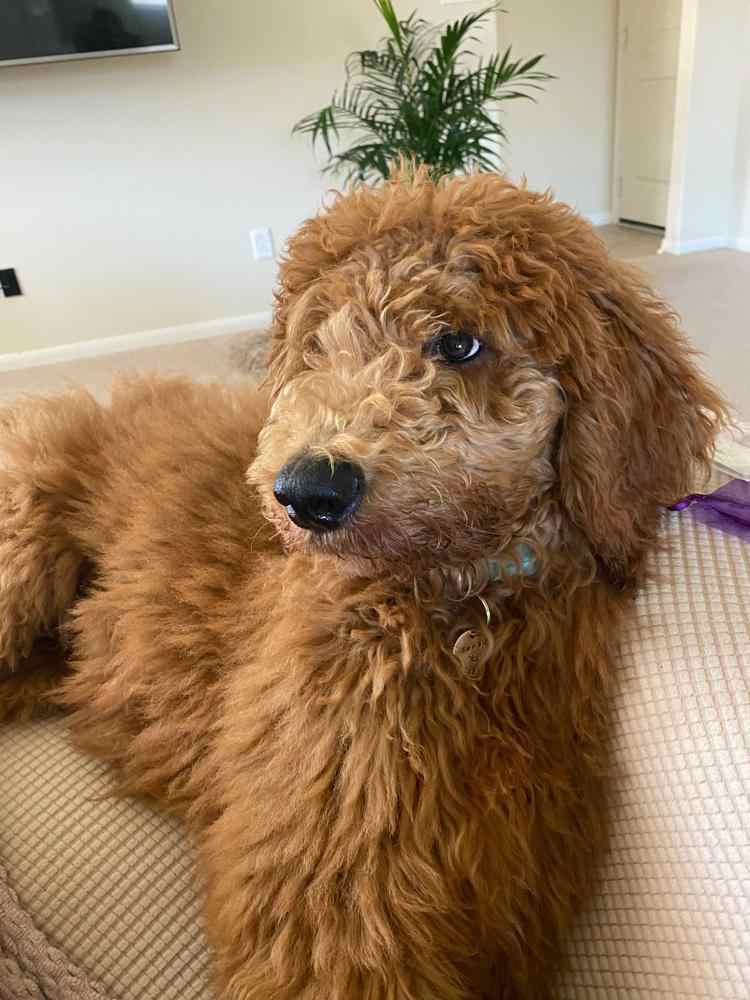
Poodles come in 3 sizes:
- The Standard Poodle
- The Miniature Poodle
- The Toy Poodle
The is an unofficial size category of poodles called the `Moyen Poodle` or `Medium Poodle`. Moyen poodles do not shed too.
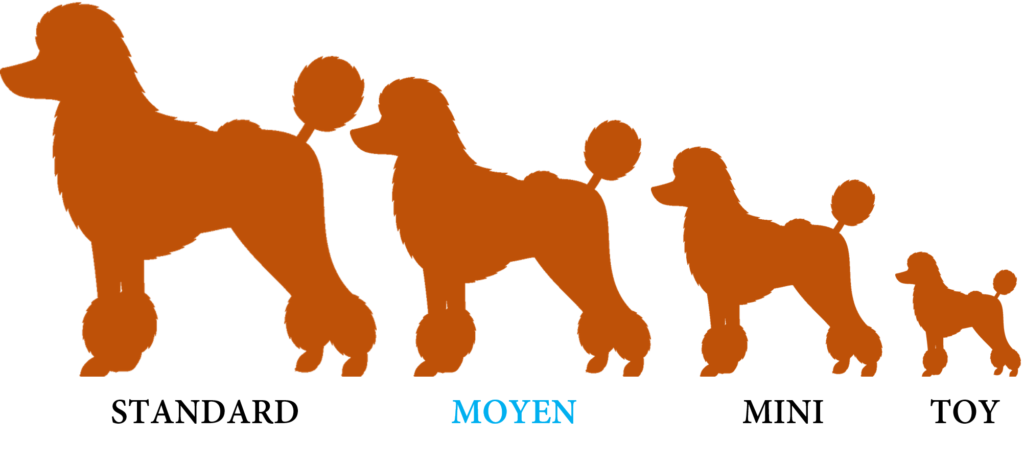
Poodles of all sizes do not shed. The Standard poodle does not shed. The Miniature poodle does not shed. The Toy poodle does not shed.
Why Don’t Poodles Shed?
Poodles don’t shed because they do not have typical fur like most dogs. Instead, they have hair. This curly fur can be coarse or soft, but it is more like human hair than dog fur. Some non-shedding dogs have a double coat, but the poodle does not. The poodle has a single coat of curly hair. This hair falls out in much the same way that human hair falls out, but usually, it falls back into the coat and gets trapped there so that it is not released until grooming.

What if My Poodle is Shedding?
If you do notice that your poodle is shedding, there may be a condition associated with the hair loss. If you just notice a piece of hair here or there, you probably don’t have anything to worry about. However, if you notice large amounts of hair around the house and stuck to furniture in excess amounts, you may want to call your vet.
Why is my Poodle Shedding?
Alopecia
Your poodle might be shedding because of a condition called Alopecia. This is a hereditary disorder that most often affects the smaller poodle breeds and causes hair loss along both sides of your poodle’s body, starting near the base of the tail and continuing up the spine. but it does not affect the head or front legs. If you notice hair loss in this pattern, you will want to talk to your vet about Alopecia. Alopecia does not produce any other symptoms, so your poodle should not experience digestive problems, skin inflammation, or any other health trouble, according to the University of Tennessee College of Veterinary Medicine.
Genetic Causes
Sebaceous Adenitis
Sebaceous adenitis is a genetic health disorder that runs in poodles, and standard poodles are at the highest risk of developing this genetic condition, which causes inflammation of the oil-producing sebaceous glands. Symptoms include shedding, skin irritation, and slow hair growth. If you notice shedding that does not appear to be in a pattern that would indicate Alopecia, you may want to ask your vet about Sebaceous Adenitis, which can be very difficult to diagnose because the symptoms vary so much and sometimes present themselves similarly to those of other diseases.
If you notice more dandruff or scaling than usual, hair loss, lesions, an abnormal odor, or skin infections, your poodle may have this disease. Some poodles can have this disease and show few to no symptoms. In these cases, the disease won’t affect your poodle’s quality of life. However, more severe cases may require veterinary intervention. Although there are many DNA and genetic tests available for diseases that run in poodles, there is not yet an accurate test for this disease. This makes it difficult for breeders to avoid producing puppies with sebaceous adenitis. Your vet will be able to diagnose this disease only through a skin biopsy sample.
Cushing’s Disease
Poodles are also vulnerable to a hereditary health disorder called Cushing`s disease, which is a dysfunction of the adrenal glands. The disease can produce a lot of different symptoms, including hair loss, excessive thirst, and bloating. Usually, a poodle with Cushing’s disease will first
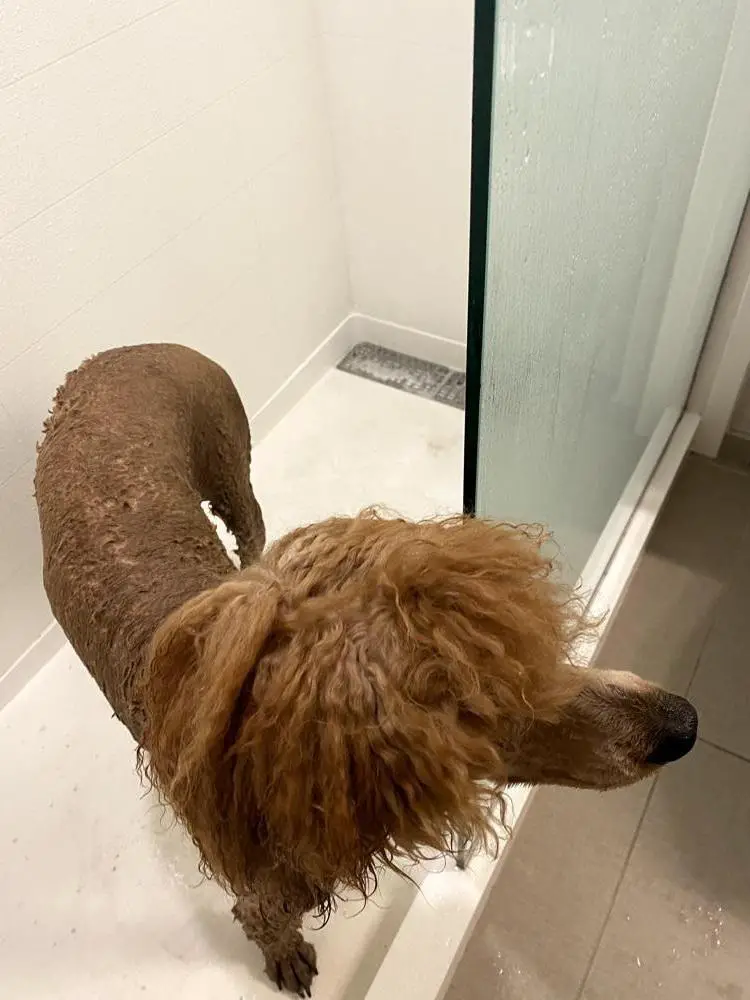
How Can I Make My Poodle Shed Less?
On the off chance that your poodle sheds, the best way to control hair loss is to figure out the root cause and treat it. If the root cause is a disease, diagnosis and treatment can help. If you are merely noticing little pieces of hair around the house, you can control this by having your poodle groomed every six to eight weeks and brushing your poodle in between grooms. You can find brushes that are specifically designed to reduce shedding and use them to work through your poodle’s coat in between grooms, removing any loose hairs that might be there. If you see little balls of hair around your house, you will know that your poodle probably has more loose hairs in his coat than can remain trapped there. This is a good indicator that you may want to take your poodle to the groomer more often or do some coat maintenance in between grooming sessions to make sure that your poodle is bathed and brushed.
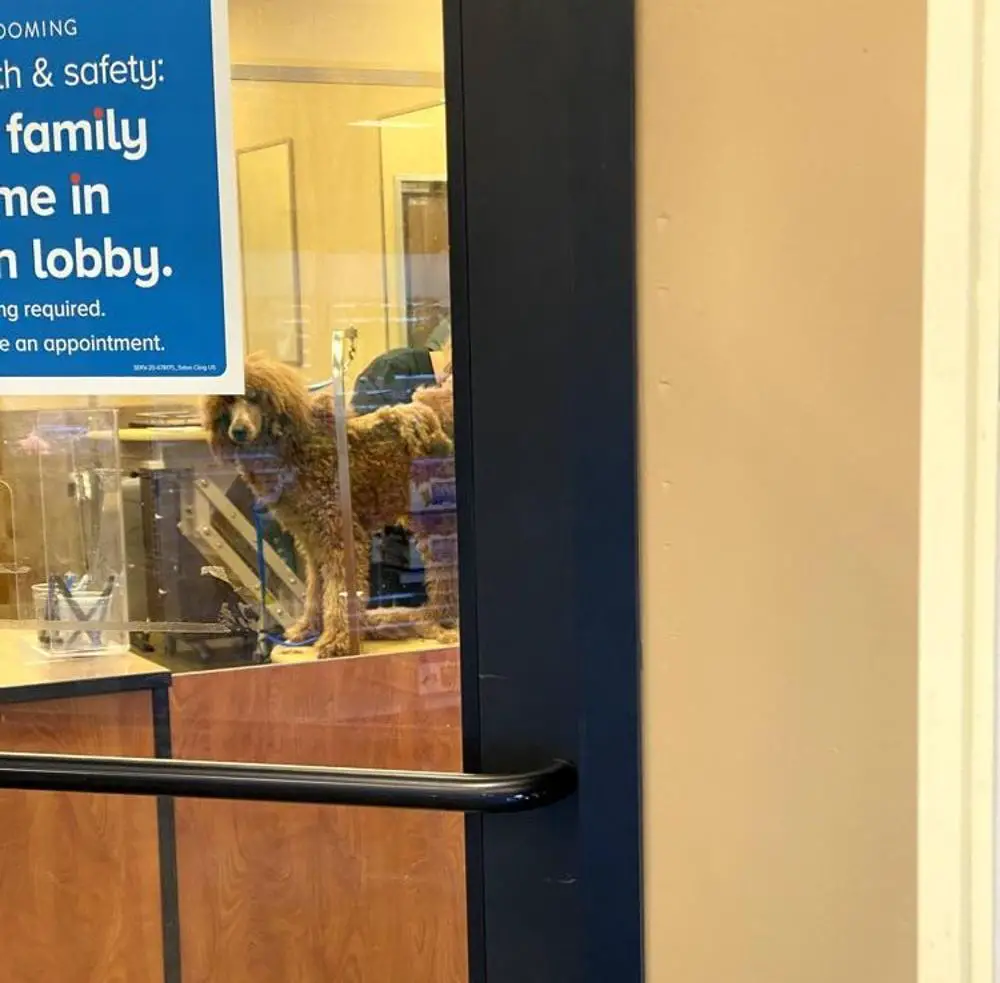
Will I be Allergic to my Poodle?
Most people who are wondering whether or not a poodle will shed are actually interested in knowing whether or not they would be allergic to a poodle. While it is true that shedding and human allergies to a pet usually go hand in hand, that is not always the case. You will need to know whether you are allergic to the dander or the saliva or a dog. Allergies to dander are much more common than allergies to saliva, but people suffer from both kinds of allergies. If you suffer from an allergy to dog saliva, it won’t matter if your dog sheds or not. You will still be allergic. Poodles do not drool so they are still a good breed for people who suffer from saliva allergies. Still, if you come into contact with your poodle’s saliva, you will be allergic to it just like you would be allergic to the saliva of any other dog breed. You are just less likely to come into contact with poodle saliva than with the saliva of a breed of dog that drools excessively.
However, if you are allergic to dander only, you will probably not be allergic to a purebred poodle. If you have an extremely severe allergy to dander, you may experience an allergic reaction from being up close to a poodle, petting it, or putting your face in its hair. However, since poodle hair does not generally fall out in large amounts and get into the air, you are less likely to have an allergic reaction to poodle dander. Poodles also have very low dander compared to other breeds. Most people with dander allergies do not report having an allergic reaction to a poodle. However, if you have a very severe allergy, you will want to spend some time around a poodle before you commit to purchasing or adopting a poodle.
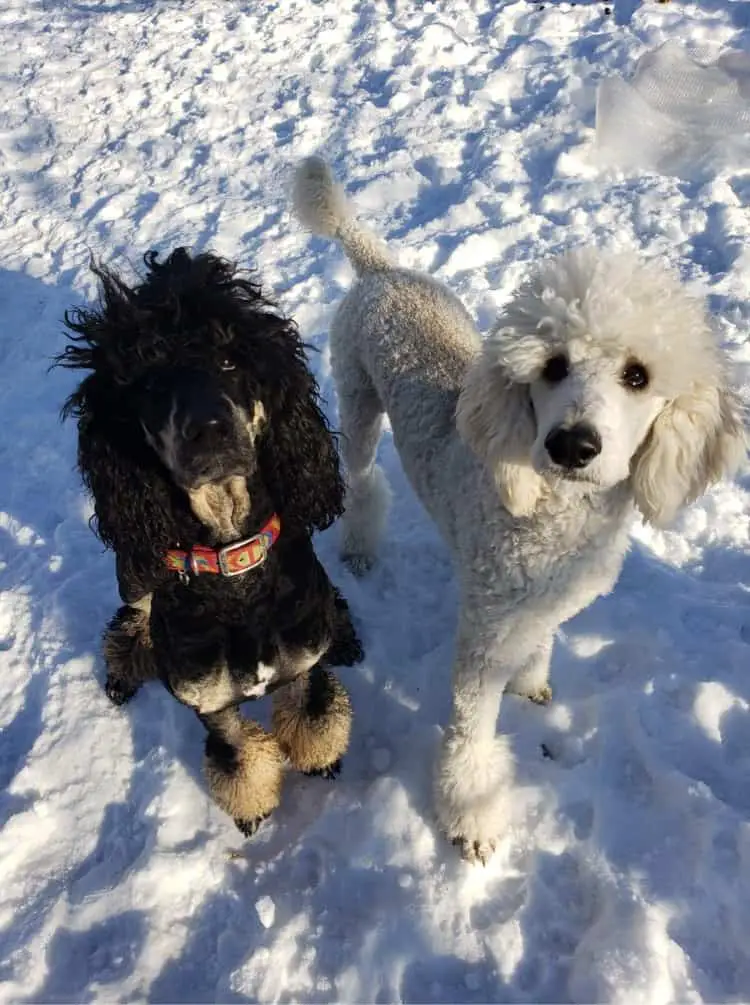
What Does Hypoallergenic Mean?
Many puppy buyers are looking for a hypoallergenic breed, but what does that really mean? Usually, when people say that they want a hypoallergenic dog, it simply means that they want one that does not shed. But non-shedding and hypoallergenic are not necessarily the same thing, even though they often go hand in hand. People with allergies to dogs are usually allergic to dander.
Dogs who don’t shed usually have less dander and so they are better for people with allergies. It is possible, however, for someone with allergies to have a reaction to a dog with low dander, especially if they are extremely allergic to dander. Other people are allergic to dog saliva, in which case they would have the most severe reactions to breeds that tend to drool more.
Poodles are not a drooling breed either, so they are also a good choice for someone with a dog saliva allergy. However, some poodles may lick their owners, in which case a reaction to saliva could occur.
What Should I Do if I am Allergic to My Poodle?
Even though it is very unlikely that you will be allergic to a poodle, it does happen. If you are one of the unlucky individuals who are allergic to poodles, you do have some options.
Take Allergy Medications or Injections
If your allergies are mild, you may be able to function using over-the-counter allergy medicines. If these don’t work, you could also talk to your doctor about allergy shots, which can help to cure allergies over the course of a few years.
Keep Your Home Clean
In the meantime, keeping your home extra clean and vacuuming every day can help, especially if you notice that your poodle loses more hair than is usual for a poodle.
Keep Your Poodle Well Groomed
You can also help avoid allergic reactions by keeping your poodle bathed, brushed, and groomed. Aside from bringing your poodle to a professional groomer every six to eight weeks, you can also make sure that his coat is kept clean by doing your own upkeep of his coat in between professional grooms.
If you are severely allergic to dander, an extra bath and brush in between grooms can help keep the dander as low as possible. If possible, do not brush your poodle yourself. If you have a spouse or family member that can take on the job of daily brushing, that would be best.
Don’t Let Your Poodle Lick You
If you are allergic to saliva, make sure you don’t allow your poodle to get into the habit of licking your hand. Avoid touching chew toys and have a family member be in charge of managing the food and water bowls.
Rehome as a Last Resort
If you are unable to cure your allergies and simply cannot live with your poodle any longer, sadly you may need to rehome your poodle. Rehoming should be the last resort for dealing with your allergies as poodles love their humans and get very attached very quickly.
Poodles can also have a difficult time adjusting to a new home. Chances are, your poodle is as much in love with you as you are with him! To avoid the heartache of re-homing, it is best to test out your allergies around the poodle breed before you adopt or purchase your own poodle.
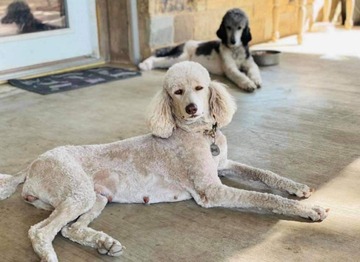
What are some Other Dog Breeds that Don’t Shed?
The poodle is not the only breed that does not shed or that sheds very little. There are other purebred dog breeds that have human-like hair or no hair and they are also great for people who suffer from a dander allergy. If you have severe dander allergies, you will want to make sure you avoid poodle mixes AKA doodles. Many people are under the pretense that doodle breeds don’t shed. This is not necessarily the case. It is not even most often the case. Most doodle breeds do shed, especially if they are first-generation doodles.
If you’re looking for another breed to own along with your poodle or if you’re simply interested in other non-shedding dog breeds, it is best to look into a purebred that is known for low dander and low shedding. The best thing you can do is to spend some time around these different breeds of dogs and see if you react. Other non or low shedding dog breeds include:
- The Spanish Water Spaniel
- The Bichon
- The Chinese Crested
- The Kerry Blue Terrier
- The Bedlington Terrier
- The Soft-Coated Wheaten Terrier
- The Logatto Romagnolo
- The Schnauzer (all sizes)
- The Bouvier Des Flandres
- The Airedale Terrier
- The Welsh Terrier
- The Lakeland Terrier
- The Peruvian Inca Orchid
- The Mexican Hairless Dog
- The Barbet
Final Thoughts
When most people think of shedding, they are thinking about the constant fur shedding you see with labs, golden retrievers, huskies, and other breeds with similar fur. Poodles do not shed in this regard. Some people will say that their poodles shed, but usually, there are just a few pieces of hair here and there that fall out the same way that humans lose strands of hair. If your poodle is shedding or losing an abnormal amount of hair, it may be indicative of a genetic or hereditary disease. For most allergy sufferers, the poodle is the perfect dog to own as they don’t shed like other breeds. Moreover, poodles have very low dander. Regular grooming can also ensure minimal hair loss in poodles.